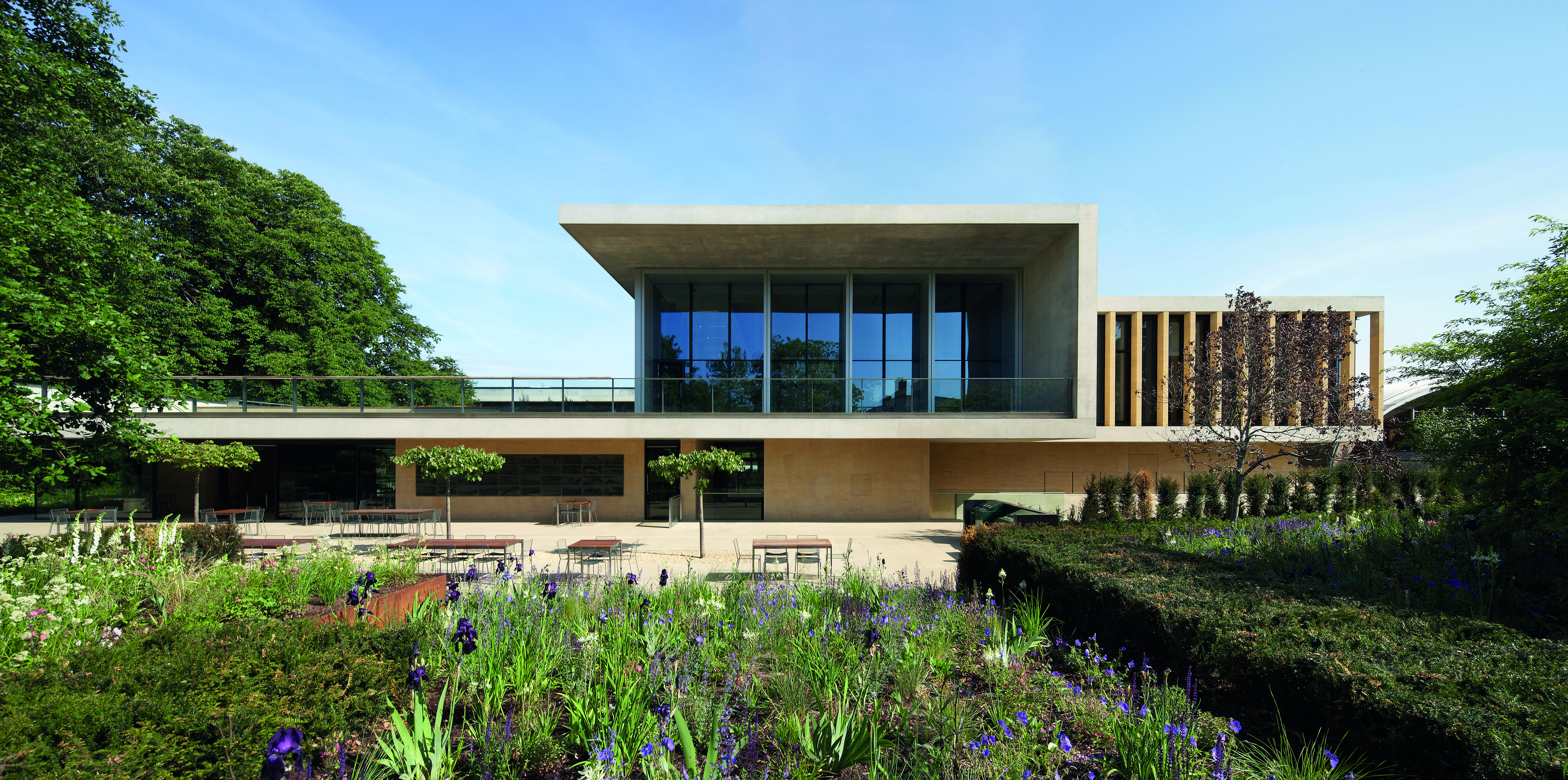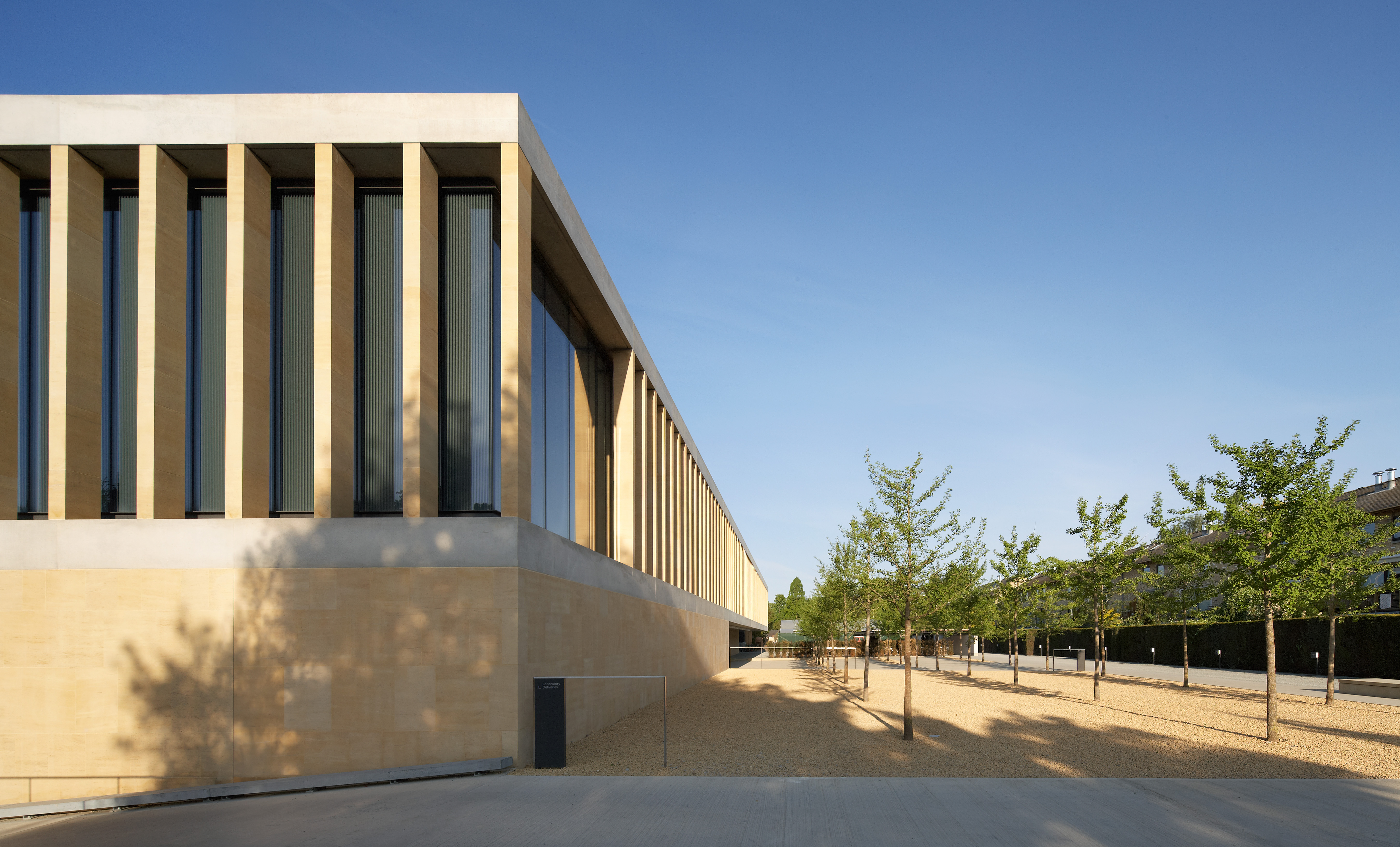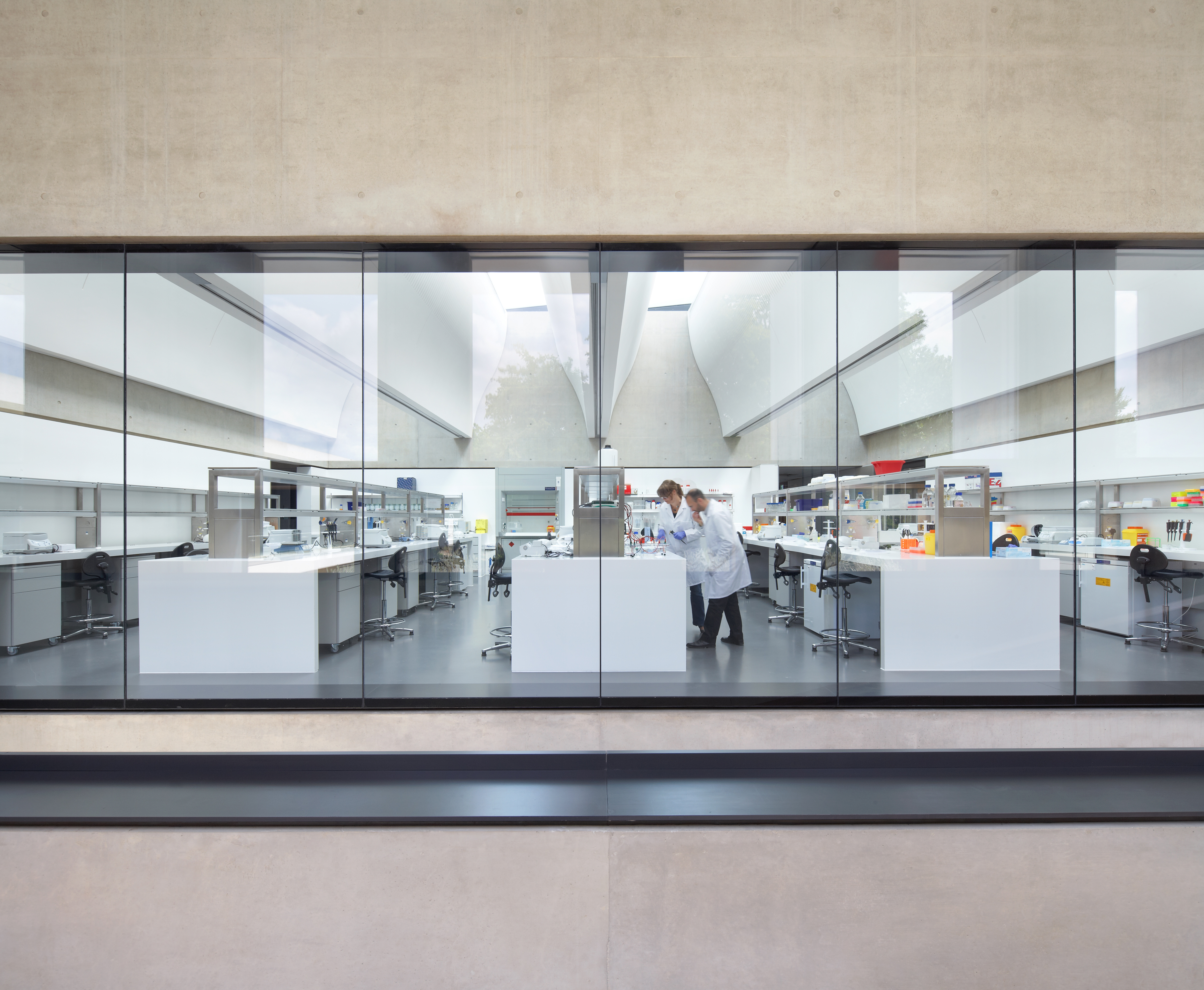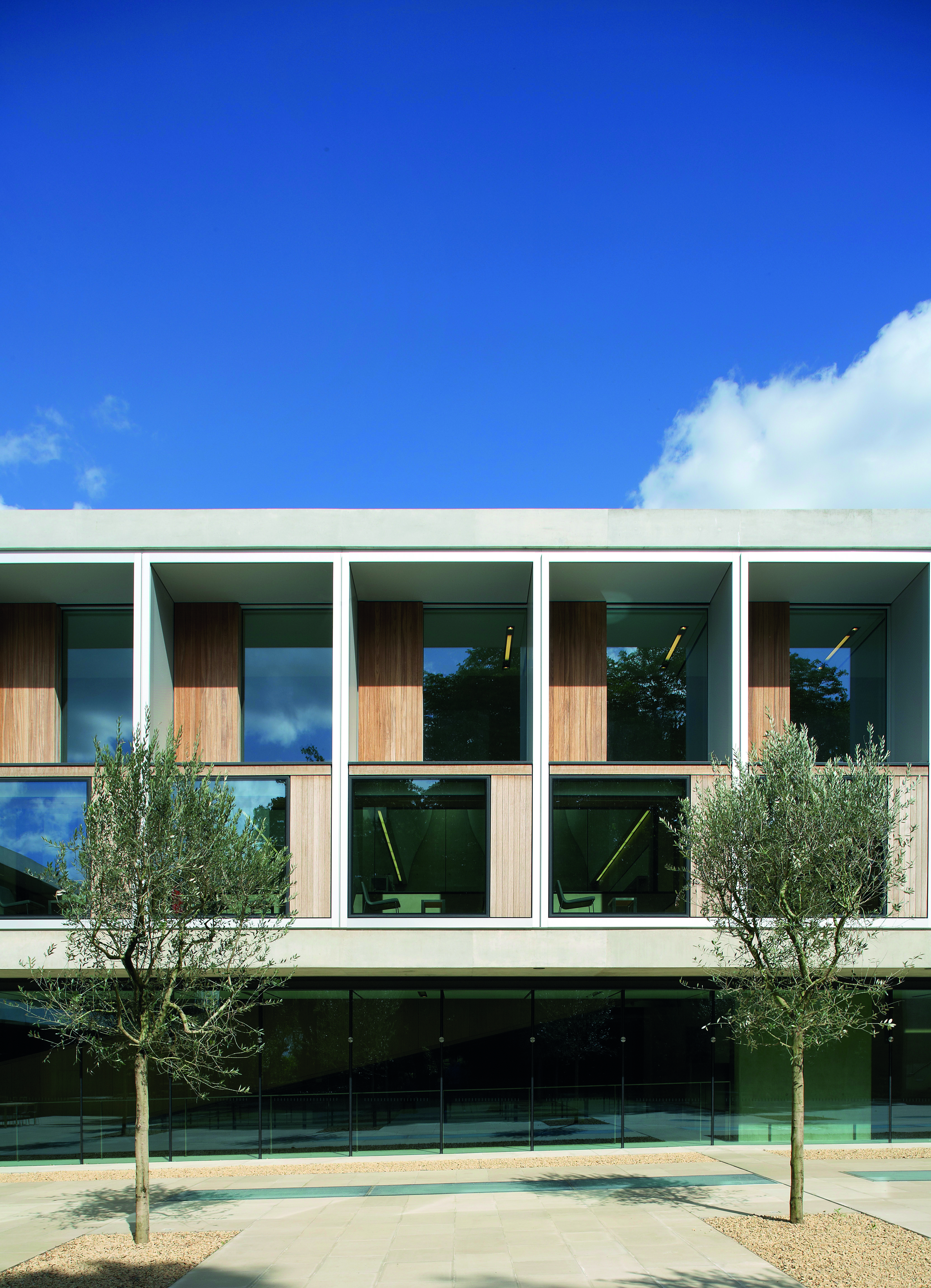Sainsbury Laboratory, University of Cambridge
by Stanton Williams
Client University of Cambridge

Stanton Williams’ Sainsbury Laboratory won the 2012 RIBA Stirling Prize.The building is situated on the northern edge of the University of Cambridge’s Botanic Gardens.
An architectural promenade forms the heart of a building which celebrates botanical research through interaction, communication and a connection with nature. From the front to the back, the building progresses from a grand, colonnaded façade to an open balcony and glazed public café, set within a botanic garden.
At ground level the entrance gently ramps down through the auditorium and meeting areas. At the upper level the scientists work on illuminated stages, with research and write-up areas forming the ends of two promenades, flanked by small spontaneous brainstorming spaces.
Sustainability through flexibility in long-term use is achieved through an adaptable façade behind the limestone pillar façade, enabling the research spaces to grow and change as required by the scientists. Despite the high energy demands of laboratories, the building has achieved a BREEAM excellent rating, aided by 1,000 square metres of photovoltaic panels and extensive natural lighting even in the laboratories. These top-lit labs are arranged on one floor in an L-shape, encouraging interaction between scientists.
This building is an exciting new typology, with spaces for research juxtaposed with those for education, the private and the public and the highly-technological nurture of nature with the simple enjoyment of an extended botanic garden.
For a more indepth look at plant science and the Sainsbury laboratory building, take a look at The Sainsbury Laboratory: Science, Architecture, Art book.
Location Details
The Sainsbury Laboratory is located on the northern edge of the University of Cambridge’s botanic gardens, approximately 2 miles from Cambridge city centre and half a mile from Cambridge rail station.










